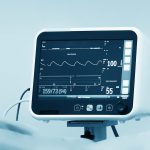Europe | US FDA | Canada (HC) | Australia (TGA) | Hong Kong (Medical Device Division) | Japan (PMDA)
EUROPE
1.Prepare for Brexit
On the 9th of July 2020 the European Commission has adopted a Communication to help national authorities, businesses and citizens prepare for the inevitable changes that will arise at the end of the transition period. Changes will occur to cross-border exchanges between the EU and the UK as of 1 January 2021– irrespective of whether an agreement on a future partnership has been concluded or not.
2.Technical Notice to Sponsors regarding continuous compliance with the EU Legislation for Clinical Trials
Since 1 February 2020, the United Kingdom has withdrawn from the European Union and has become a “third country”. The Withdrawal Agreement3 provides for a transition period ending on 31 December 2020. Since no extension was requested as of July 1 2020, there is no possibility for further extension beyond that date.
Most importantly, according to Article 13(2) of Directive 2001/20/EC, the qualified person has to be established in the EU/EEA.In addition, according to Article 19 of Directive 2001/20/EC, the sponsor of a clinical trial or a legal representative must be established in the EU.
3.Certification of medical devices: GMED is designated as a notified body under the new European regulation
The GMED, specialized in certification in the medical field, has been designated a notified body (ON) in France, under the new European regulation (EU 2017/745) on medical devices (DM). A notified body assesses and issues the CE marking necessary for the marketing of medical devices in Europe. This designation comes at the end of the process required by the regulations in order to ensure the proper functioning of the notified bodies. This demanding process is essential for patient safety.
The designation of GMED, which was published by the European Commission on 08/07/2020 on the database of NANDO notified bodies, will take effect on 07/07/2020, in accordance with article 42 (11). From this date, the GMED will be able to assess and certify MDs in accordance with the new European regulations.
4.Federal Council adopts new MepV and KlinV-Mep
To improve patient protection, the Federal Council would like to increase the quality and safety of medical devices. At its meeting on July 1, 2020, it adopted the revision of the Medical Devices Ordinance (MepV) and the new Ordinance on Clinical Trials for Medical Devices (KlinV-Mep). These are the implementing provisions for the Therapeutic Products Act and the Human Research Act, which were approved by Parliament in 2019 and are based on the new provisions of the European Union.
US FDA
5.Regulatory Submissions for Medical Devices in Electronic Format
Section 745A(b) of the Federal Food, Drug,and Cosmetic Act (FD&C Act), amended by section 207of the FDA Reauthorization Act of 2017(FDARA) (Pub. L. 115-52), requires thatpre-submissions and submissions for devices under section 510(k), 513(f)(2)(A), 515(c), 515(d), 515(f), 520(g), 520(m), or 564 of theFD&C Act or section 351 of the Public Health Service Act, and any supplementsto such pre-submissions or submissions, including appeals of those submissions, be submitted in electronic format specified by the Food and Drug Administration (FDA or the Agency)beginning on such date as specified by FDA in final guidance.
6.FDA Published Guidance document on “Select Updates for Guidance for the Non-Clinical and Clinical Investigation of Devices Used for the Treatment of Benign Prostatic Hyperplasia (BPH)”
FDA has developed this draft guidance to propose select updates to the FDA guidance document “Guidance for the Non‐Clinical and Clinical Investigation of Devices Used for the Treatment of Benign Prostatic Hyperplasia (BPH).” The existing guidance on devices used for the treatment of BPH remains in effect, in its current form, until this draft guidance is finalized. FDA intends to incorporate this draft guidance into one final guidance document after obtaining and considering public comment on these select updates. The proposed sections referenced below are intended to replace applicable sections of the existing BPH guidance after FDA considers public comment on this draft guidance. The sections of the existing BPH guidance that are not affected by this select update will not be substantively changed and will remain in effect.
7.Select Updates for Peripheral Vascular Atherectomy Devices – Premarket Notification [510(k)] Submissions
FDA has developed this draft guidance to propose select updates to the FDA guidance document “Peripheral Vascular Atherectomy Devices – Premarket Notification [510(k)] Submissions.” The existing guidance on peripheral vascular atherectomy devices remains in effect, in its current form, until this draft select update is finalized. FDA intends to incorporate this draft select update guidance with the existing guidance into one final guidance document after obtaining and considering public comment on these select updates. The proposed sections referenced below are intended to replace applicable sections of or add new section(s) to the existing atherectomy guidance after FDA considers public comment on this draft select update. FDA does not intend to substantively change the sections of the existing atherectomy guidance that are not affected by this select update.
8.FDA prepares for resumption of domestic inspections with new risk assessment system
The U.S. Food and Drug Administration has been thoughtfully and deliberately determining the safest and most appropriate time to resume prioritized domestic inspections of FDA-regulated facilities and other associated activities since we first announced postponement in March.
9.FDA delays UDI enforcement
FDA’s direct mark compliance policy for class III, LS/LS, and class II devicesthat are non-sterile, that are manufactured and labelled prior to their applicable direct mark compliance date, and that remain in inventory, as well asfor class I and unclassified devices that are not LS/LS devices, that are non-sterile,that aremanufactured and labelled prior to September 24, 2022, and that remain in inventory.
10.US FDA publishes final guidance outlining standard inspection procedures
The procedures outlined in this document are intended to make the inspection process faster and more efficient without causing undue hardship for device companies; they do not apply to for-cause inspections, which may still be carried out at any time without advance notice. The Regulatory Affairs Professional Society (RAPS) noted a major increase in FDA inspection volume over the decade leading up to FDARA, pointing to the need for increased standardization.
Canada (HC)
11.Summary Basis of Decision (SBD) for TULSA-PRO system
On November 20, 2019, Health Canada issued a Class III License to Profound Medical Inc. for the TULSA-PRO system.
The market authorization was based on submitted data from preclinical and clinical studies. Based on the Health Canada review, it is considered that the benefit-risk profile of the TULSA-PRO system is acceptable for thermal ablation of low- to intermediate-risk organ-confined prostate cancer defined as clinical stage ≤T2b and ≤group IIA, using transurethral ultrasound ablation (TULSA) with in-bore real-time magnetic resonance imaging (MRI) treatment planning, monitoring, visualization, thermal dosimetry, and active temperature feedback control of thermal treatment.
Australia (TGA)
12.Reduced annual Charges for Medical devices listed on the prostheses list
In response to the suspension of elective surgery due to COVID-19 and the significant impact this has had on parts of the medical devices industry, the Government has agreed to provide a 50 percent reduction in annual charges for certain medical devices. The 50 percent reduction in annual charges will be prescribed for the 2020-21 financial year for medical devices included in the Australian Register of Therapeutic Goods (ARTG) as Class IIa, IIb, III and AIMD.
Hong Kong (Medical Device Division)
13.Revised Essential Principles of safety and performance of Medical Devices
This document is adapted from the GHTF document GHTF/SG1-N41R9:2005. It specifies the Essential Principles of Safety and Performance of Medical Devices. The Local Responsible Person (LRP) in conjunction with the manufacturer shall ensure that their products fully comply with all the applicable requirements. This document applies to all products that fall within the scope of the Medical Device Administrative Control System (MDACS).
Japan (PMDA)
14.Announcements: Updated GMP certification checkpoint” for export certification
Please note that the procedure for certification of medical equipment is conducted by the Overseas Medical Equipment Technical Association (OMETA).



